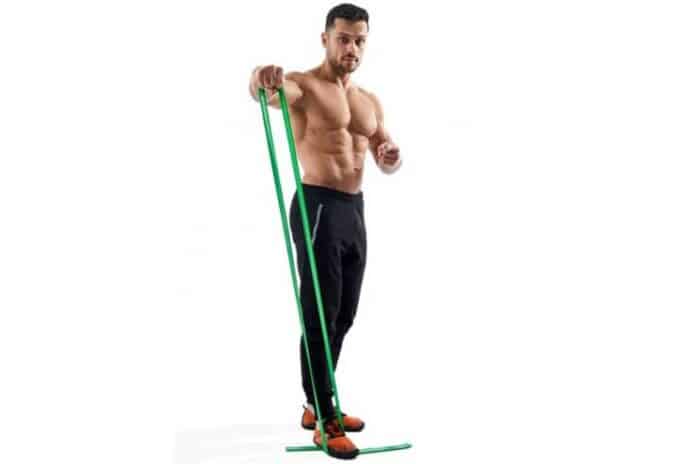Affiliate Disclaimer
Some links in this article are affiliate links. We may earn a small commission if you make a purchase through these links, at no extra cost to you. We only recommend products we find useful to our readersResistance bands are excellent for arm strength and excellent for beginners. Compared to any other fitness equipment, resistance bands offer low-impact flexible training that involves targeting and toning muscles without the need for heavy weights or gym equipment.
These affordable and effective resistance bands are a must to enhance muscle definition and endurance or to add some variation to your workout. Learn how resistance bands can help you in arm exercises, get some tips on practical and easy ways to start training, and find simple moves that will help you strengthen your arms from home.
Also, read: 18 Resistance Band Exercises For A Healthier Physique
Benefits of Resistance Bands for Arm Workouts
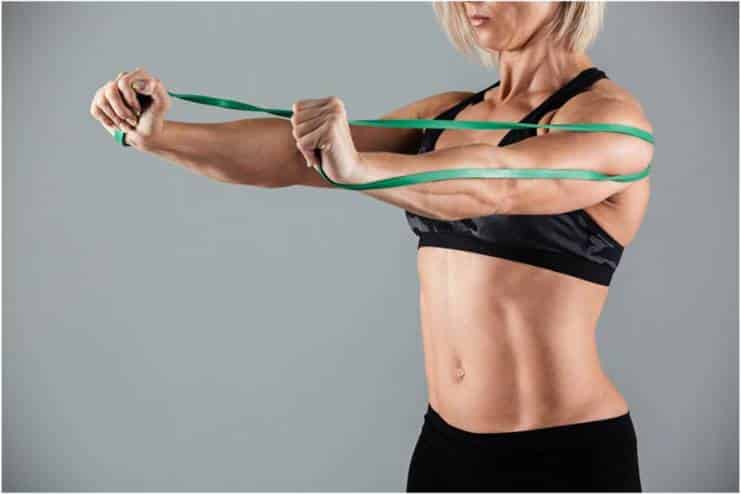
Resistance bands are a flexible and efficient way of strengthening the arms. They provide significant benefits, including:
- Lower Risk of Injury: Resistance bands differ from free weights. They reduce joint strain that results from free weights. They are ideal for those who have injuries or joint pains. Such individuals can work effectively and safely.
- Increased Muscle Activation: Bands bring constant tension throughout the movement, thus providing more consistent muscle activation than traditional weights. This enhanced muscle stimulus will also promote your strength gains and endurance.
- Improved Stabilization and Core Engagement: The dynamic resistance from bands constantly forces you to stabilize, thus engaging your core muscles much more effectively to help develop better balance and coordination besides strengthening your arms.
- Versatility in Exercises: Resistance bands are versatile and have a wide variety of exercises used in different planes of motion. This thus helps develop the strength of different muscle groups in the arms and improve overall functional strength.
- Cost-Effective and Portable: Bands are relatively inexpensive and easy to store, thus perfect for home workouts or traveling. They can provide a range of resistance options without needing gym equipment.
- Support for Rehabilitation: Resistance bands are commonly used in rehabilitation facilities. They can provide gentle resistance while being very effective and are helpful in gradually rebuilding strength and flexibility in an injured or recovering arm.
Choosing the Right Resistance Bands

Consider these key factors when selecting the best bands for your workouts:
- Buy a Variety of Bands: In general, you should begin with different resistance levels if you are a beginner. A beginner may easily start with a light band, each band being color-coded for easy identification. There may be more than one color which means different tension levels, though that may not be consistent between brands.
- Prioritize Quality: Select durable bands that are resistant to breakage or sticking. Thicker bands are generally more resistant and last longer. Always check your bands for wear and tear before each session.
- Consider Material Type:
- Fabric Bands: These do not roll or slide around as easily during exercise and can be used during lower-body workouts.
- Latex Bands: These are more stretchy, thus ideal for upper body exercise, dynamic movement, and stretching.
- Check Out Accessories: Accessories might be included in the kit, which includes handles, a door attachment, or an ankle cuff. Simple sets will, of course, be enough for a beginner.
Related Article: 12 Best Fabric Resistance Bands- Must Have For our fitness
Essential Resistance Band Arm Exercises
Resistance bands are fabulous tools to tone your arms, shoulders, and back. Here are some of the best resistance band exercises for your arms you may do at home:
1. Seated Resistance Band Biceps Curl
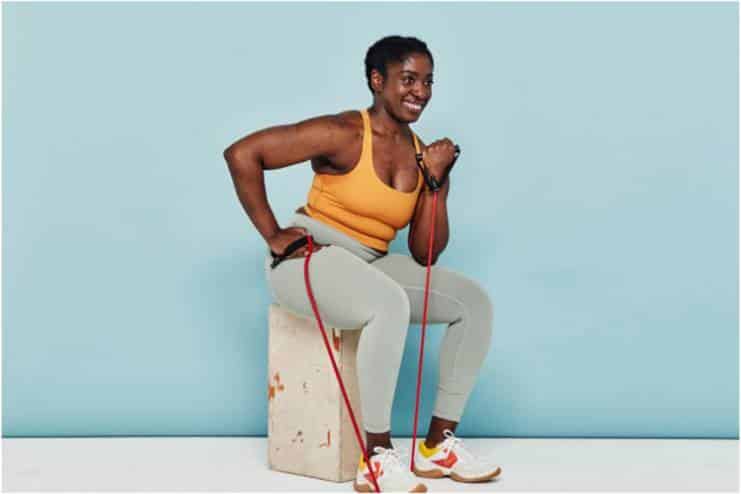
- Sit on a chair or bench with your feet wide apart. Place one end of the resistance band under your left foot and hold the other end in your right hand. Rest your right elbow on your right thigh.
- Bring your right hand towards your shoulder while keeping your shoulders relaxed, focusing on your bicep. Do 10-12 reps on each arm.
- Engages biceps and triceps
2. Resistance Band Pull-Apart
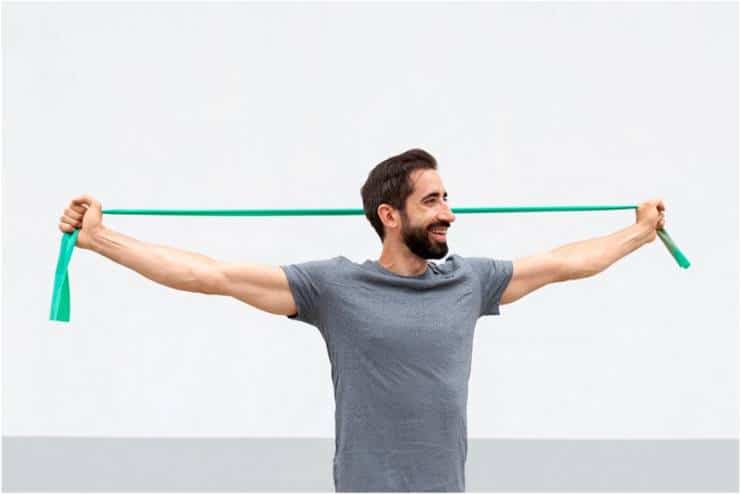
- Stand with feet hip-width apart, holding one end of the band in each hand at chest height with palms down.
- Stretch the band apart by raising your arms as wide as possible while keeping them at chest height. Bring back to the starting position. Repeat 10-12 times.
- Engages shoulders, chest, and back.
3. Overhead Resistance Band Stretch

- Stand with your feet together and hold one end of the band in each hand. Lift the band overhead with straight arms, keeping hands about 6 inches apart.
- Bring your arms away from your body, taking them through till your arms are bent to shoulder height and the band is at your upper back. Return to the overhead. Do 10-12 reps.
- Engages triceps and back.
4. Resistance Band Push-Out

- Setup: Stand with your feet together with the band across your back, and your elbows are bent to a 90-degree angle.
- Push your arms away from your body in all directions until fully extended. Return to the starting position. Do 10-12 reps.
- Engages biceps, shoulders, back.
5. Resistance Band Back Press
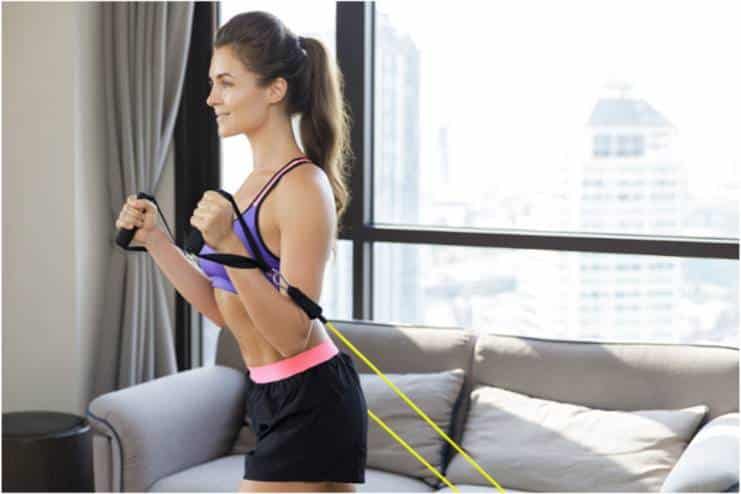
- Stand with your feet together, looping the band across your back. Take a step forward with one foot into a staggered stance.
- Extend your arms from your rib cage to chest height while pushing both hands forward. Return to the starting position. Do 10-12 reps.
- Engages biceps and chest.
6. Cuff Pivot
- Stand with your feet together, hold the band just below your chest with elbows bent, and reach out.
- Bring one hand out while holding still with the other hand, allowing your shoulder to rotate. Do 10-12 reps on each side.
- Engages shoulders and rotator cuffs.
7. Bow and Arrow
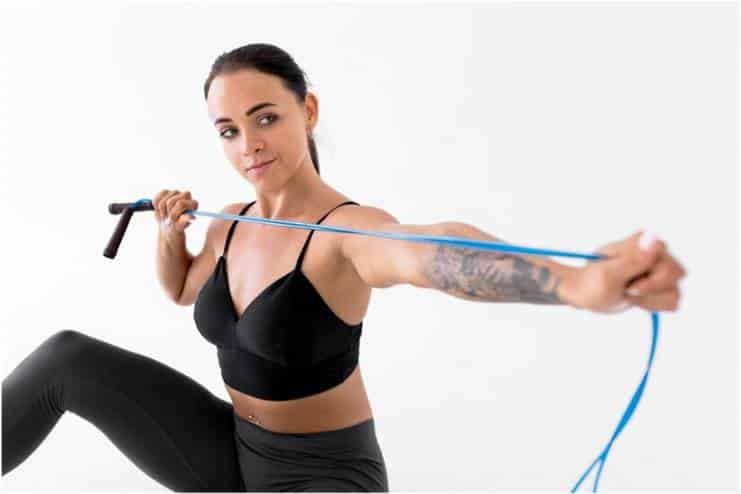
- Stand with your feet spread hip-width apart. Hold one end of the band in each hand. Extend one arm out to the side and bring the other hand to chest height.
- Pull your hand back as if you’re drawing an arrow, keeping the elbow pointed out. Bring it back to the starting position. Do 10-12 reps on each side.
- Engages shoulders, triceps, and chest.
8. Staggered Stance Resistance Band Row
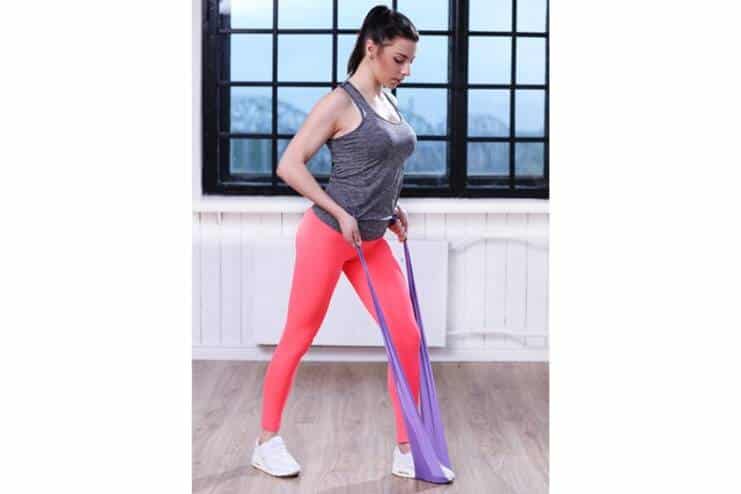
- Stand with your feet 12 inches apart, with one foot forward. Loop the band under that foot and hold one end in each hand.
- Hinge forward, pulling the band toward your torso, as you straighten your arms and return to standing. Repeat 10-12 times per side.
- Engages triceps and shoulders.
9. Resistance Band Tricep Kickback
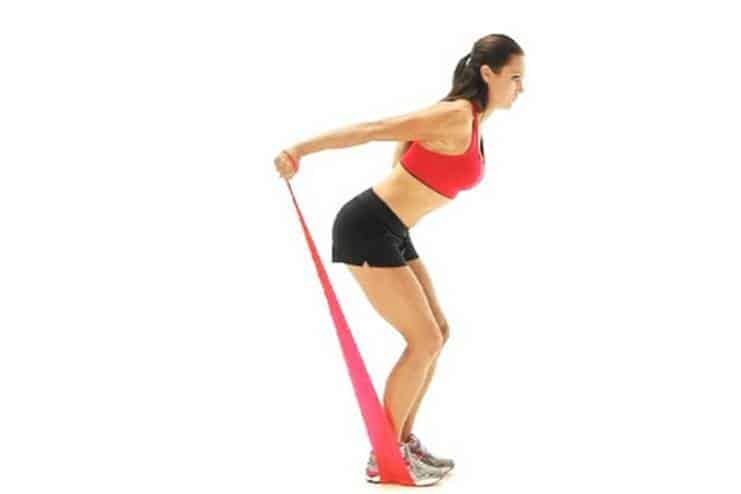
- Setup: Stand with your feet 12 inches apart and one foot forward. Loop the band under that foot and hold one end in each hand.
- Lean forward, elbows at 90 degrees, extend arms backward, contacting the back of the arms with the triceps. Return to the starting position. Do 10-12 on each side.
- Engages triceps, shoulders, and back.
10. Tricep Reach
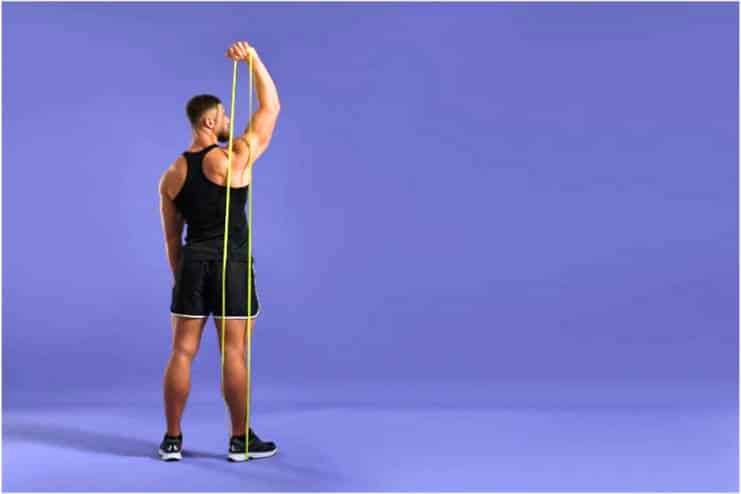
- Stand with your feet together, and hold the band in one hand at the small of your back and the other at shoulder height.
- Bring the band overhead with your triceps back to the starting position. Use each side for 10-12 repetitions.
- Engages triceps.
11. Single-Arm Front Raise
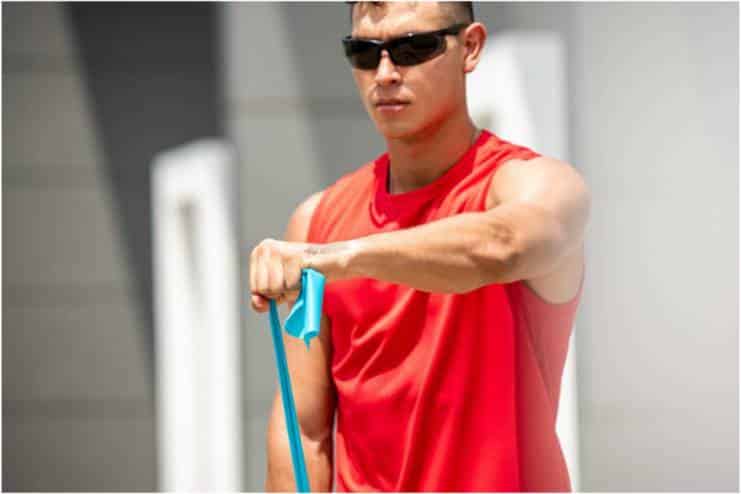
- Stand with your feet together, place the band under both your feet, and grab one end of the band in each hand.
- Lift your arm straight out in front of you so that it reaches up to chest height; then lower it back down. Do 10-12 repetitions on each side.
- Engages shoulders.
12. Single-Arm Lateral Raise With Static Hold

- Stand with your feet together, place the band under both feet and grab one end of the band in each hand.
- Lift one arm straight out to the side while keeping the other arm still. Do 10-12 reps on each side.
- Engages shoulders, back, and chest.
13. Single-Leg Resistance Band Deadlift
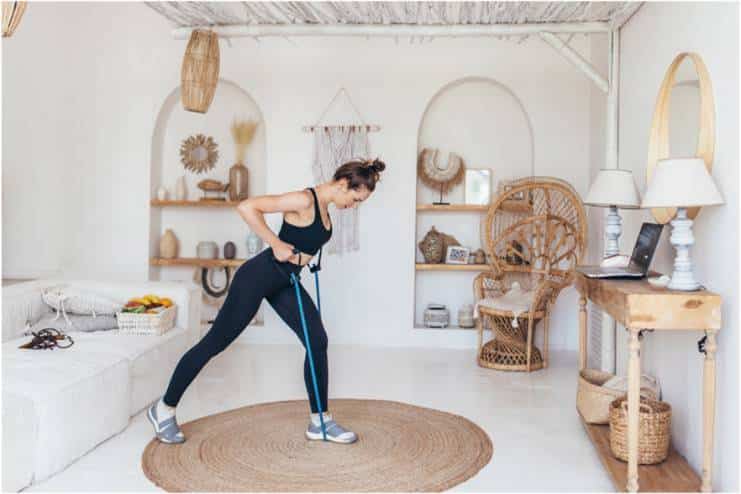
- Stand with the band looped under one foot, holding one end of the band in the opposite hand.
- Hinge forward at the hip while lifting the opposite leg behind you. Return to the starting position. Repeat 10-12 on each side.
- Engages hamstrings, glutes, and lower back.
Also, read: 10 Best Finger Resistance Bands and Its Benefits
Tips for Success and Avoiding Common Mistakes
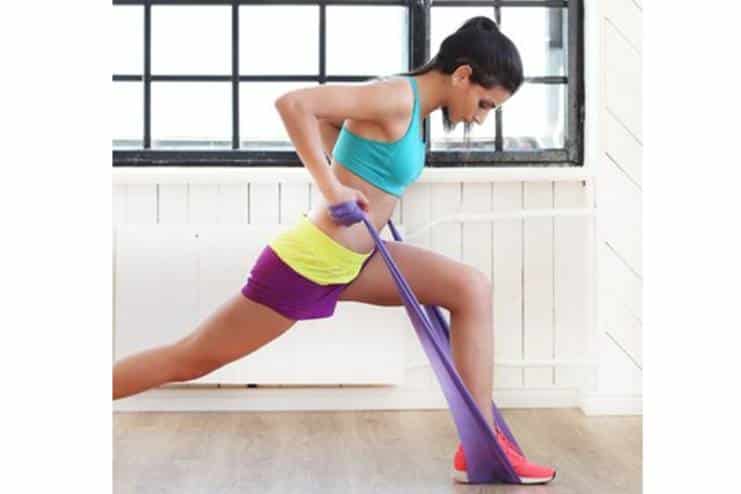
Tips for Success
- Proper Form: Use the proper form for each exercise to avoid injuries and get more out of your exercises. For example, make sure your elbows are near your body when doing a bicep curl, and don’t swing your arms back when doing this movement.
- Choose the Right Resistance Level: Select a resistance band that has the right resistance that works through your muscles without allowing you to compromise on proper form. If the resistance is too high or low, it does not function well.
- Controlled Movements: Complete every exercise with regulated and intentional movements. Be careful not to use momentum to lift the bands as that will lose the tension around the muscles, thus diminishing the workout benefits.
- Focus on Muscle Contraction: In bicep exercises, focus on contracting your biceps during the entire movement. Tricep exercises ensure full extension of the limbs to use the triceps.
- Consistency: Incorporate this workout into your routine and perform it 2-3 times a week. Consistency is the key to achieving and gaining strength.
- Warm-Up and Cool-Down: Warm the muscles with light exercises before starting your session. Cool down with light exercises afterward for recovery and less soreness; stretching can also help with flexibility.
Avoiding Common Mistakes

- Incorrect Band Placement: Poor band positioning can make a workout less effective and even dangerous. Ensure you have adequate anchoring or position the band securely underneath your feet for stability.
- Using Too Much Momentum: You should not swing or jerk your bands to end the exercises, as this will reduce your muscle engagement. Also, you will strain your joints. Use smooth and controlled motion instead.
- Neglecting Rest: Failing to allow your muscles adequate time to rest between workouts overwork your muscles and may cause fatigue and even injury. Give them time and allow at least 48 hours between workout sessions that target the same muscle groups for full recovery.
- Skipping Warm-Up: Failure to warm up before your workout is bound to lead to higher risks of injury and generally low performance. Do not fail to include a warm-up to prepare your muscles to exercise.
- Not Adjusting Resistance: If the resistance of your band is too weak or far too strong, your workout will be ineffective. Adjust the resistance to match your strength levels and workout goals.
- Ignoring Pain: Stop immediately if you feel a sharp or unusual pain during a workout. Persistent pain may indicate an injury or poor form and require visiting a fitness or healthcare professional.
Conclusion
Adding resistance bands to your arm workout can produce excellent results that help you achieve toning your arms. You are assured that your exercises are effective and safe if you continue following the suggested tips to success and avoid the common mistakes above. To maximize your muscle engagement without injury, proper form and right resistance should be used while maintaining control of your movements.
By diligent exercise and mindful training, band workouts can dramatically improve your arm strength and toning. It makes no difference whether you are aiming for sculpted triceps or defined biceps; these tips will guide you in achieving your desired fitness objectives. Resist boredom with resistance bands and embrace the journey to your arm-toning success.
Related Article: Top 10 Essential Strength Training Equipment for Home Workouts
In this Article
















